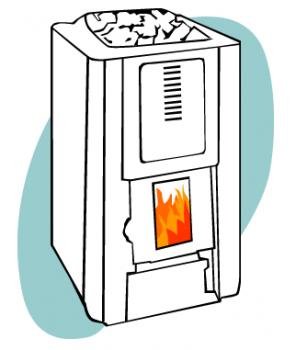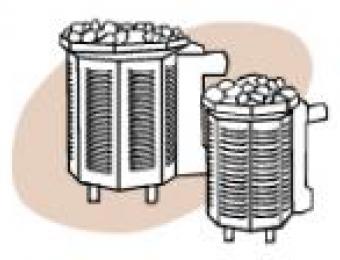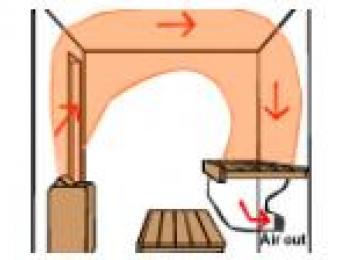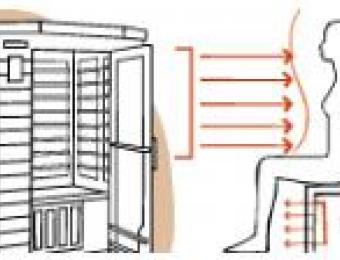
Wood fired sauna ovens are more common in Europe and are the traditional way of heating a sauna. Many people swear by the softer heat produced by a wood stove, and it adds a sound and aroma that really can’t be imitated.
How do wood-fired sauna heaters work?
A wood stove is installed in much the same way as an electric or gas heater, but requires a chimney for adequate ventilation of smoke. Even though the fire is a convective heat source in itself, it should still be laden with stones, because they disperse the heat better than the stove. The wood heater should also draw air from outside the sauna too, wherever possible. You don't want the people inside the sauna competing with the fire for oxygen! Wood heaters should ideally be capable of heating the whole sauna area to a temperature of around 60-90°C.
What type of wood should I use?
The heat you get from a wood fired heater will depend less on the size of the heater, and more on the wood you choose to burn. Heavier hardwoods such as grey box, ironbark and maple will burn longer and hotter than softer woods such as pine. Experiment with different woods for different aromas too - many native woods will give off a different scent to European woods. It helps to live in an area where firewood is easy to store and obtain.
Safety considerations
It's already been mentioned, but wood heaters should ideally draw air from outside of the sauna, so that they're not sucking oxygen out of the room. You will also need to allow enough room in your design and surrounding insulation for a chimney. This is very important - smoke inhalation can be a very dangerous thing. It's a good idea to ensure that the chimney is kept clean too. How often it needs to be cleaned will depend on how often you use it, and what sort of wood you burn.
You may also wish to consider placing the entrance to the furnace on the outside of the sauna to reduce wood clutter in the sauna and to prevent coals from accidentally falling into the sauna. If it’s a small heater, remember that if you do this you’ll probably need to exit the sauna to stoke the fire.
Because the temperature in a wood-fired sauna can’t be carefully regulated with a thermostat like it is in gas and electric saunas, getting the temperature just right is an inexact science, and a matter of trial and error. A good thermometer inside the sauna and a bit of practice will help you to get the temperature right.
|
Advantages
|
Disadvantages
|





